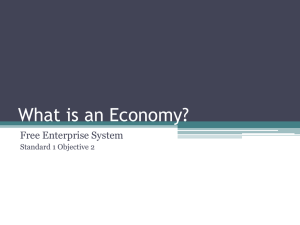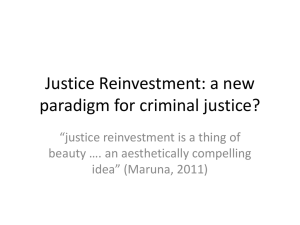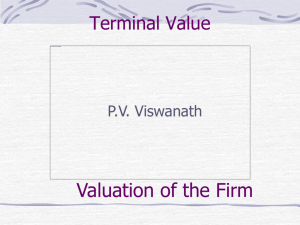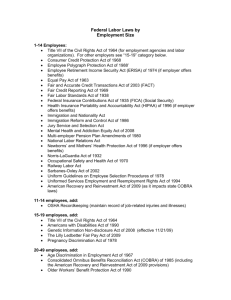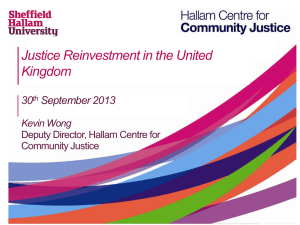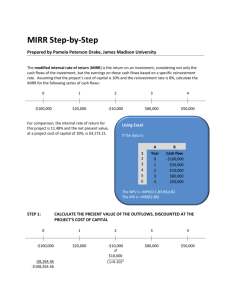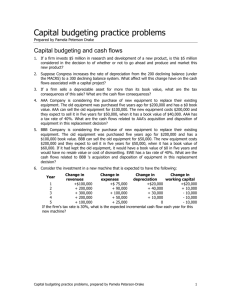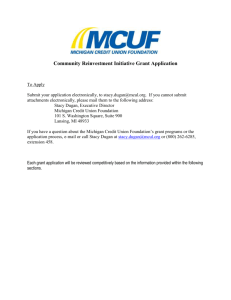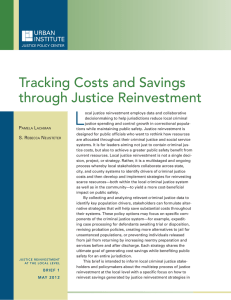Investment Valuation: Growth & Terminal Value Solutions
advertisement
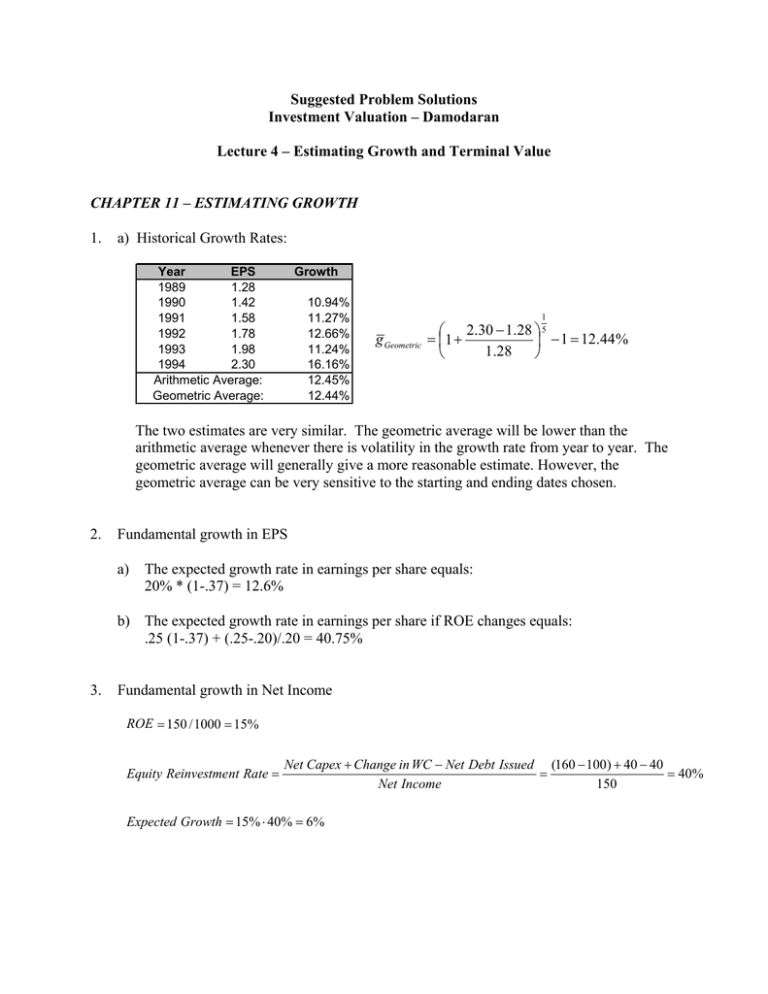
Suggested Problem Solutions Investment Valuation – Damodaran Lecture 4 – Estimating Growth and Terminal Value CHAPTER 11 – ESTIMATING GROWTH 1. a) Historical Growth Rates: Year EPS 1989 1.28 1990 1.42 1991 1.58 1992 1.78 1993 1.98 1994 2.30 Arithmetic Average: Geometric Average: Growth 10.94% 11.27% 12.66% 11.24% 16.16% 12.45% 12.44% 1 g Geometric ⎛ 2.30 − 1.28 ⎞ 5 = ⎜1 + ⎟ − 1 = 12.44% 1.28 ⎝ ⎠ The two estimates are very similar. The geometric average will be lower than the arithmetic average whenever there is volatility in the growth rate from year to year. The geometric average will generally give a more reasonable estimate. However, the geometric average can be very sensitive to the starting and ending dates chosen. 2. Fundamental growth in EPS a) The expected growth rate in earnings per share equals: 20% * (1-.37) = 12.6% b) The expected growth rate in earnings per share if ROE changes equals: .25 (1-.37) + (.25-.20)/.20 = 40.75% 3. Fundamental growth in Net Income ROE = 150 / 1000 = 15% Equity Reinvestme nt Rate = Net Capex + Change in WC − Net Debt Issued (160 − 100) + 40 − 40 = = 40% Net Income 150 Expected Growth = 15% ⋅ 40% = 6% 4. Fundamental Growth in Operating Income a) Expected growth with no change in ROC: ROC = 100 / 800 = 12.5% Reinvestme nt Rate = Net Capex + Change in WC 25 + 15 = = 40% EBIT (1 − T ) 100 Expected Growth = 12.5% ⋅ 40% = 5% b) Expected growth when ROC is changing: Expected Growth = ( Reinvestme nt Rate × ROC ) + ΔROC = (15% ⋅ 40%) + 15% − 12.5% = 26% 12.5% CHAPTER 12 – ESTIMATING TERMINAL VALUE 2. Expected EBIT in year 7 = 80 (1.20)6 (1.05) = $250.823 million Expected EBIT (1-T) in year 7 = $250.823 (1 - .40) = $150.494 million Reinvestment rate in year 7 = g/ ROC = .05/.14 = 35.71% Free Cash Flow in year 7 = $150.494(1-.3571) = $96.753 million Terminal Value6 = $96.753/(.10-.05) = $1,935.05 million 3. a) Expected stable growth rate = ROC* Reinvestment rate = 15% x 30% = 4.5% Expected high growth rate = .80 *.15 = 12% EBIT (1-t) in year 5 = (.15*100) (1.12)4(1.045) = $24.66 million Free Cash Flow in year 5 = $24.66 x (1-30%) = $17.262 million Terminal value = 17.262/(.09-.045) = $383.6 million b) If return on capital drops to 9%, the firm has two choices. It can continue to grow at the same rate, but with a higher required reinvestment rate, or it can keep reinvestment the same and grow at a slower rate (or some combination of these two choices). We can reestimate value by either changing the reinvestment rate (keeping growth at 4.5%) or changing the growth rate (keeping the reinvestment rate at 30%). If the growth rate is kept fixed, we get: Reinvestment rate = 4.5/9 = 50% Free Cash Flow = 24.66(1-.5) = $12.33 million Terminal value = 12.33/(.09- .045) = $274 million If the reinvestment rate is kept fixed, we get: Expected growth rate = 9%(.30) = 2.7% EBIT (1-t) in year 5 = (.15*100) (1.12)4(1.027) = $24.24 million Free Cash Flow in year 5 = 24.24(1-.3) = $16.968 million Terminal value = 16.968/(.09-.027) = $269.33 million 5. a) After-tax operating income in year 6 = 20 (1.1)5(1.04) = $ 33.50 million Net CapEx in year 6 = (15-5) (1.1)5(1.04) = $16.75 million Free Cash Flow to the Firm in year 6 = 33.5 – 16.75 = $16.75 million Terminal Value of firm in year 5 = 16.75/(.12 - .04) = $209.375 million b) We are assuming that after-tax earnings, capital expenditures, and depreciation all grow at the same rate over time. We are therefore assuming a constant reinvestment rate over time. The future reinvestment rate will equal the current reinvestment rate or: Reinvestment rate = (15 – 5)/20 = 50% (in perpetuity) ROC = g/Reinvestment rate = .04/.5 = 8% (in perpetuity) c) If Net Capex equals zero, then Free Cash Flow in year 6 will equal the full amount of after-tax operating income, or $33.50 million. We then have: Terminal Value (with Net Capex=0) = 33.50/(.12-.04) = $ 418.75 million d) If the reinvestment rate is zero and cash flows are still expected to grow at 4% per year in perpetuity, the ROC would have to be infinite. It is simply not possible for the firm to grow in perpetuity with no reinvestment.
